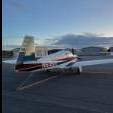Highest density altitude takeoff in an E?
-
Members Online
- PT20J
- jeremyc209
- Bolter
- Sabremech
- Ivan
- TangoTango
- LANCECASPER
- SoccerCA
- Ragsf15e
- Jetpilot86
- DXB
- VetRepp
- Paul Thomas
- Justin Schmidt
- N201MKTurbo
- 1980Mooney
- TCC
- Air pirate
- AndreiC
- Jim F
- patrickf
- Jim Peace
- Bpvlbv
- Peter T
- shawnd
- dzeleski
- 00-Negative
- EricJ
- neilpilot
- Marc_B
- exM20K
- eman1200
- MikeOH
- FLYFST
- PeterRus
- Andy95W
- varlajo
- 201Mooniac
- PeteMc
- croissant
- spaceman39a
- 47U
- Losbright1


Recommended Posts
Join the conversation
You can post now and register later. If you have an account, sign in now to post with your account.